Reviews
L’une chante, l’autre pas
Agnès Varda
Venezuela / France / Belgium, 1977
Credits
Review by Ian Johnston
Posted on 28 July 2010
Source MUBI.com
Categories Viva Varda: The Films of Agnès Varda
Make it clear, simple, not too complicated. If I put myself on the screen - very natural and feminist - maybe I’d get ten people in the audience. Instead, I put two nice young females on the screen, and not too much of my own leftist conscience. By not being too radical but truly feminist, my film has been seen by 350,000 people in France. It’s better if they all got half the message than to have 5000 people seeing a courageous 16mm film.”1
Agnès Varda makes it very clear here: One Sings, the Other Doesn’t was conceived as a film aimed at the widest audience possible, one that would celebrate the gains that the feminist movement brought to women in the seventies. The downside to this is that the film, while not without its charm, is probably the least rewarding of her features. Varda’s formalism, her taste for experimentation and structural complexities, have been smoothed out in favour of a straightforward narrative (carried by a lot of voiceover from Varda herself and the two leads) that charts the contrasting fortunes of two women: Pauline, a young singer from a bourgeois background; and Suzanne, a slightly older woman of peasant stock.
Varda’s own engagement with the feminist movement2 dates from her first visit to the United States in the late sixties and her exposure to British and American theoretical writings, but it continued and deepened into direct action upon her return to France. Historically, there were two key events for French feminists in the seventies. Firstly, in 1971, the news weekly Le Nouvel Observateur published a statement signed by 343 women.3, including Varda, claiming to have had abortions (a punishable crime). Then, in 1972, the Bobigny trial - in which a working-class mother, three of her colleagues, and her under-age daughter, a rape victim, were tried for procuring the daughter’s abortion - was a focus of protest that eventually saw the overturning of the law banning abortions in France. 4
The struggle for abortion rights was a central issue for French feminists of the seventies, and it has a prominent role in One Sings, the Other Doesn’t. In the film’s first section, the teenage Pauline cons money out of her parents in order to pay for an abortion in Switzerland for Suzanne, worn down by the strains of bringing up two young children and the life of poverty she shares with her lover Jérôme. (This, of course, was another aspect to the Bobigny trial: if you had money, you could just get an abortion in a neighbouring country.) Later, Pauline herself travels to Amsterdam for her own abortion; Varda was involved in a group that organised such trips for French women. It’s in Amsterdam that Pauline discovers her vocation as a feminist troubadour and changes her name to “Pomme5”); inserted into the film here is an endearingly dotty music clip of Pomme on an Amsterdam barge singing a tribute to the women on her abortion trip. (One of a few aspects to the film that has dated rather badly, above all Pomme’s rather cringe-making hippie-folky consciousness-raising songs, penned by Varda herself, along the less than profound lines of “I am Woman, I am me.”) Finally, Varda recreates a demonstration outside the Bobigny trial, which is where Suzanne and Pauline meet again after ten years.
“Women are made, not born.” In her voiceover introduction Varda name-checks Simone de Beauvoir’s famous declaration from The Second Sex as an over-riding theme of her film, and the first section of the film addresses how women’s identities are constructed in images. Jérôme is a photographer, and while he’s never set up as an arrogant bullying male chauvinist (in fact, there’s a certain sympathy in the portrayal of his weak, suffering character), his vision of his art - how he practises the photography of women as subjects - is still a flawed one, rightly challenged by Pauline in her interactions with him after she wanders into his studio gallery in the film’s first scene.
The models for Jérôme’s photographs are all women he knows, neighbours and acquaintances, and his approach is to pose them for so long that, through weariness, their “essence” emerges: “What I’m after is Woman… in her naked truth.” There is of course nothing objective about this; what Jérôme is creating is his own image of the women who are his models, and when Pauline herself poses for him, she resists this image: “I’m not ‘overwhelmed’ the way you like them. I’m not a victim. Not even for a photo.” The separate journeys of Suzanne and Pauline that Varda tracks through the film are the struggle of two women who define their own images of themselves, in Beauvoir’s sense “make” themselves, and refuse the images that are imposed on them from (a male) outside. And the film’s utopian epilogue declares that this struggle, although ongoing, has been a largely successful one.
After this first section set in 1962, the film leaps ten years to Pauline (now Pomme) and Suzanne’s brief meeting-up at the Bobigny trial and then offers separate flashbacks as they “speak” to one another through voiceover monologues. These separate stories then continue past 1972 through what one of Varda’s own voiceovers calls “a quiet imaginary dialogue punctuated by postcards.” In One Sings, the Other Doesn’t a lot - perhaps, in the end, too much - is conveyed through these three sets of voiceovers. We’re told things as much as we’re shown them. Even the depth of their friendship is to be taken on trust, as much a stated premise for everything that subsequently follows in the story as something we feel through the interaction of the characters.
To be honest, Suzanne’s story is a lot more interesting than Pomme’s. There’s nothing especially remarkable about Pauline’s progress from middle-class teenager to feminist singing icon, but what happens to Suzanne is. After the two women first part ways, Suzanne is forced to return to a grinding, brutal life on the family farm, where her parents treat her with a mixture of sullen resentment and outright cruelty. The very colour tones of her sections of the film are darker than those of Pomme’s. It’s only her own force of will that allows her and her children to escape from this: through her teaching herself to type (there’s a striking shot of Suzanne practising typing in the cowshed), studying to be a medical secretary in the south (now the colours brighten), working for a male gynaecologist, and then founding a family planning centre.
In Pomme’s story, there is a very curious detour to pre-revolutionary Iran. Pomme meets Iranian Darius on her abortion trip to Amsterdam, then later, after a musical project collapses, returns with him to Iran and eventually gets married. With its colour and exoticism this interlude seems quite out of place. Perhaps Varda found it useful for the clear way it delineates some important issues for women. The dividing line between men and women is portrayed as much clearer in Iranian society, the sense of women’s exclusion is much more pronounced, and Darius’ reversion on home soil to traditional gender role expectations raises important points about marriage from a feminist perspective. But surely in a film like this these issues should be directly addressed in terms of French, and not Iranian, society6, and this is something that Varda does not do.
Varda dedicates One Sings, the Other Doesn’t to her daughter Rosalie, and her voiceover in the film’s epilogue is addressed to her as much as anyone. Suzanne, professionally accomplished and happily married, and Pomme, back in France without Darius7 and having resumed her singing career, are spending an idyllic summer holiday together with family and friends. There’s a sense of peace, celebration, unity, and quiet achievement. As Varda’s voice sums up the significance of these two women’s struggles, the camera joins all her characters together in a slow inclusive pan that significantly comes to rest on the figure of Rosalie, appearing as Suzanne’s late-teenaged daughter Marie:
[Suzanne] knew she was living according to her own will. And she was glad to see that the same thing was true for Pomme who had had a hard time with others and herself but now had it together. Their friendship was a good one. True, they were different. One sang, the other did not. Yet they were alike. They had fought to gain the happiness of being a woman. Maybe their optimistic struggle could help others like Marie, who was becoming a woman. No one thought it would be easier for her, but perhaps it would be simpler, and clearer.”
- Gerald Peary, ‘Agnès Varda’ (1977) http://geraldpeary.com/interviews/stuv/varda.html↩
- See: Alison Smith, Agnès Varda, Manchester: Manchester U.P., 1998, pp. 102-104. ↩
- ‘Le manifeste des 343 salopes’ - literally, ‘The Manifesto of the 343 Sluts’ - which can be read here: http://tempsreel.nouvelobs.com/actualite/societe/20071127.OBS7018/le-manifeste-des-343-salopes-paru-dans-le-nouvel-obs-en-1971.html.↩
- More on this here: http://fr.wikipedia.org/wiki/Proc%C3%A8s_de_Bobigny.↩
- “Pomme” being literally “Apple”, which is what she is often called by writers on the film in English.↩
- To her credit, Varda does show some awareness of how problematic this Iranian interlude is. In her voiceover she comments on how Pomme “had seen in Iran only what she was looking for, a tale of love in an oriental setting”. And Pomme herself, on deciding not to return to Iran, declares: “No more phony pictures or clichés.” ↩
- Varda’s solution to Pomme’s marital crisis is certainly novel: Darius can return to Iran with their newborn child as long as he impregnates her with a second one for her to bring up in France. ↩
More Viva Varda: The Films of Agnès Varda
-
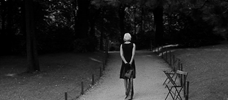
Cléo from 5 to 7
1962 -
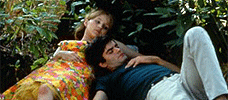
Le Bonheur
1964 -
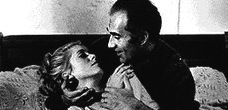
Les Créatures
1966 -
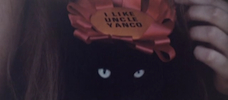
Uncle Yanco
1967 -

Black Panthers
1968 -
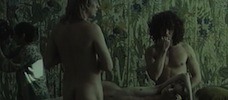
Lions Love
1969 -
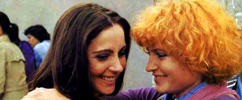
One Sings, the Other Doesn’t
1977 -
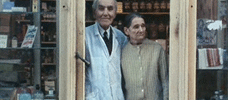
Daguerréotypes
1976 -

Mur murs
1981 -

Vagabond
1985 -
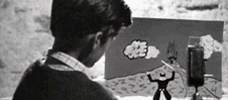
Jacquot de Nantes
1991 -

One Hundred and One Nights of Simon Cinéma
1995 -

The Gleaners and I
2000 -
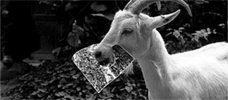
Cinévardaphoto
2004 -

The Beaches of Agnès
2008
We don’t do comments anymore, but you may contact us here or find us on Twitter or Facebook.



